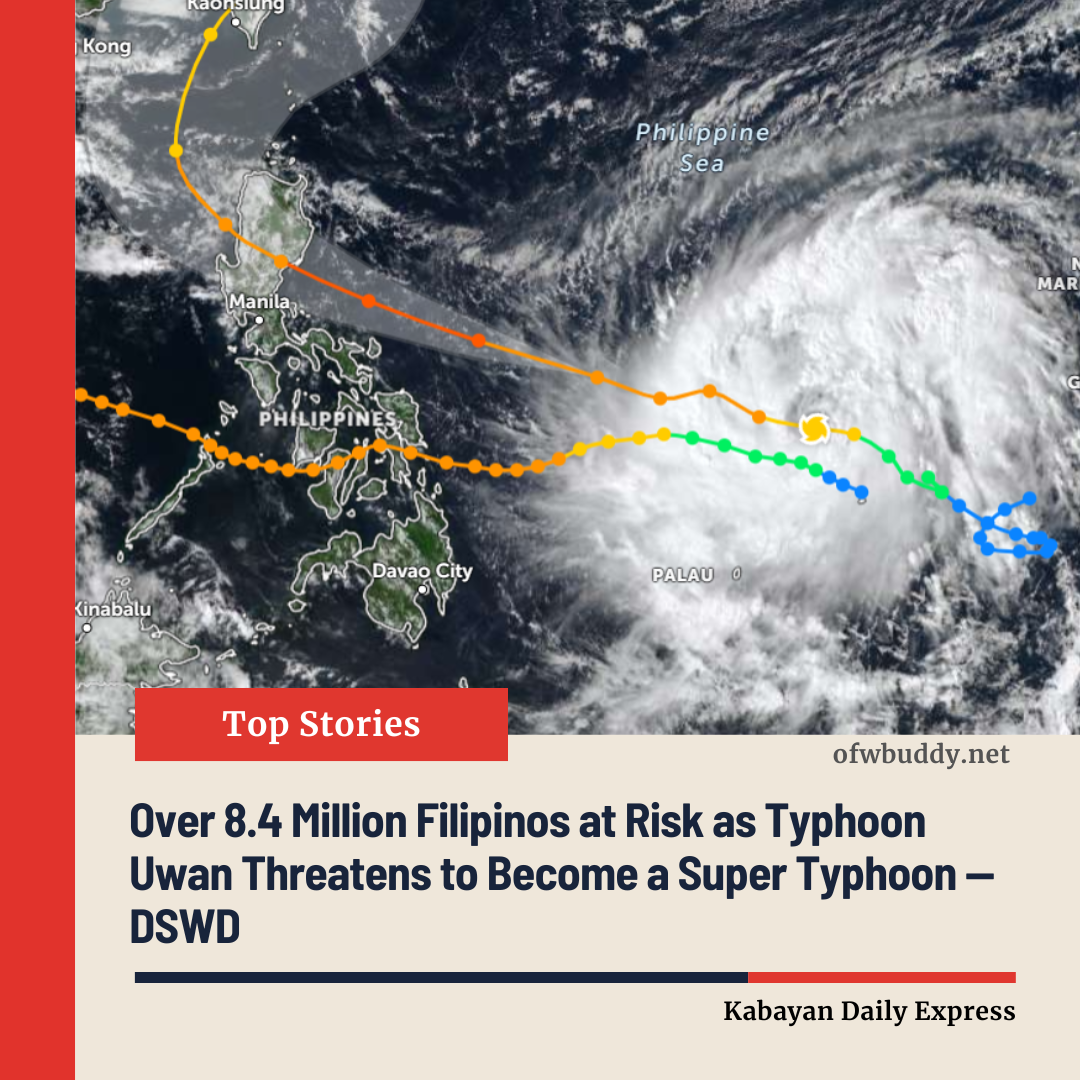Manila, Philippines – November 8, 2025
The Department of Social Welfare and Development (DSWD) has warned that more than 8.4 million Filipinos across several regions may be affected by Typhoon Uwan, which has the potential to intensify into a Super Typhoon in the coming days. The agency issued the warning based on its latest predictive analytics report.
According to DSWD, the regions likely to be directly impacted include the Ilocos Region, Cagayan Valley, Central Luzon, Cordillera Administrative Region (CAR), CALABARZON, and the Bicol Region.
However, the typhoon’s rainbands and wide circulation may also reach Western Visayas, Negros Island, Central Visayas, and Eastern Visayas — areas that were recently battered by Typhoon Tino.
The DSWD added that around 5.7 million residents living in coastal areas and 466,000 low-income families, particularly in CAR, Ilocos Region, and Cagayan Valley, are among those most vulnerable to the storm’s strong winds and heavy rains.
Office of Civil Defense (OCD) Deputy Administrator for Administration Assistant Secretary Bernardo Rafaelito Alejandro warned that Typhoon Uwan’s large radius of 700 kilometers and diameter of 1,400 kilometers could bring torrential rains and damaging winds to areas spanning from Batanes to Bohol.
Meanwhile, the Mines and Geosciences Bureau (MGB) of the Department of Environment and Natural Resources (DENR) identified more than 8,000 barangays nationwide that could experience flooding and landslides due to continuous rainfall. The agency also noted that many areas remain highly vulnerable because of loosened soil from the previous typhoon, including Southern Leyte, Quezon, Sorsogon, Cebu, Capiz, Palawan, and Surigao.
As a preventive measure, both the DSWD and OCD urged local government units (LGUs) to begin pre-emptive and forced evacuations by Sunday, particularly in high-risk areas susceptible to floods and landslides.
Authorities continue to monitor Typhoon Uwan closely, reminding the public to stay updated through official weather bulletins and follow evacuation advisories when necessary.

